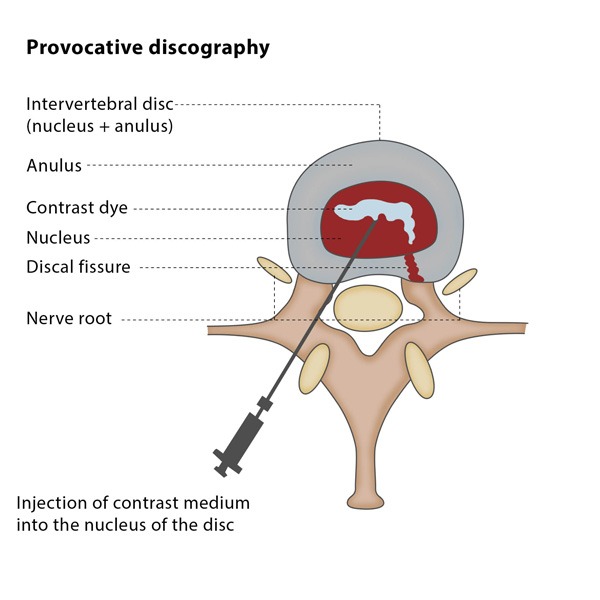Once the interventional radiologist has completed the contrast injection, they will assess the shape of the disc on radiographs or a CT scanner. The contrast injection also increases the pressure between the discs, meaning that the functional evaluation in the discography procedure consists of pain induced by the interventional radiologist and the assessment of your response.
Why perform it?
You may be suitable for a provocative discography if you are suffering from persistent neck or back pain which has not responded to conservative treatment and if non-invasive tests such as MRI have not provided sufficient information about your condition.
You should only undergo a discography if you are being considered for surgery, as the anatomical and functional results of the procedure influence the surgical decision-making process.
What are the risks?
The reported rate of complications following the procedure is less than 1%. The most serious complication is infection. When puncturing an intervertebral disc, needle contact with a nerve may occur but this generally causes only temporary symptoms.
Bibliography
1. Kelekis AD, Filippiadis DK, Martin JB, Brountzos E. Standards of practice: quality assurance guidelines for percutaneous treatments of intervertebral discs. Cardiovasc Intervent Radiol. 2010 Oct; 33(5):909-13.
2. Filippiadis DK, Mazioti A, Papakonstantinou O, Brountzos E, Gouliamos A, Kelekis N, Kelekis A. Quantitative discomanometry: correlation of intradiscal pressure values to pain reduction in patients with intervertebral disc herniation treated with percutaneous, minimally invasive, image-guided techniques. Cardiovasc Intervent Radiol. 2012 Oct; 35(5):1145-53.

